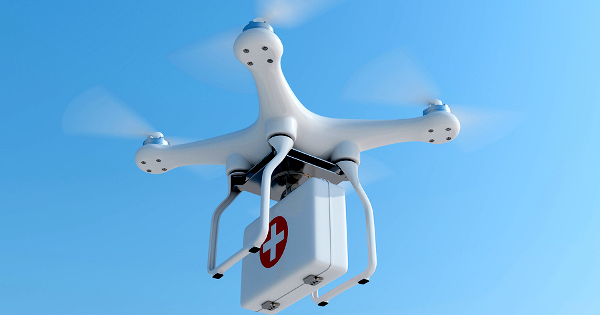NEW DELHI: Drones may soon be able to beat Indian cities’ notorious traffic and ensure speedy transportation of organs between hospitals, a possibility without creating green corridors or special road routes. Union minister of state for aviation Jayant Sinha said the authorities concerned, which will begin registration of big drones (non-toys) from December 1, are looking at creating “drone ports” in hospitals.
“We will begin registration from December 1 and then the required licences will be issued from a month later to accord drones a legal status in India. We are working on the next step of our recently announced drone policy where we are looking at allowing flying drones beyond line of sight (enabling operators to fly drones without having them in sight) in certain areas,” Sinha said.
One of the main areas being considered for this application is having designated air corridors between big hospitals. “Drone ports in hospitals can allow quick transportation of harvested organs to recipients under the Drone 2.0 policy or the next generation of our policy that was recently announced. The draft civil aviation requirement for the same will be issued for consultation on January 15, at a global aviation summit India is hosting in Mumbai,” Sinha said.
Special digital airspace will be created for use of drones, he added. In the next phase, big changes are likely in the drone policy by allowing one pilot to operate multiple drones to allow things like using drones to deliver things in some areas. A white paper on this will be issued shortly, Sinha said.
India recently got its first set of rules for legally using drones. Getting a licence to operate a big drone (over 2 kg in weight) will cost Rs 25,000 and extending the same will cost Rs 10,000. The Directorate General of Civil Aviation (DGCA) has come out with rules to operate remotely piloted aircraft systems (RPAS) like drones, which have been categorised into five categories — nano (weighing up to 250 grams), micro (250 grams to 2 kg) and then small, medium and large drones that are in the weight range of 2-25 kg; 25-150 kg and above 150 kg, respectively.
Anyone flying a drone weighing over 2 kg will need formal training to do so from a DGCA-approved flying training organisation. Apart from those flying nano drones, which are mostly used as toys, and RPAS owned by security agencies, Indian nationals using all other categories of drones will need to get a unique identification number (UIN).
Source:ToI
Image Courtesy:JonBarron
You may also like
-
Trade Connect E-platform For Exports Is Single Window, Fast, Accessible And Transformational: Shri Piyush Goyal
-
Dot Simplifies Approval Processes For Telecom Licenses And Wireless Equipment
-
Coal Production and Supply Trends on Positive Trajectory
-
Union Minister To Release Booklets On Promotion Of Indigenous Species & Conservation Of States Fishes
-
2nd India-Japan Finance Dialogue held in Tokyo on 6th September, 2024
